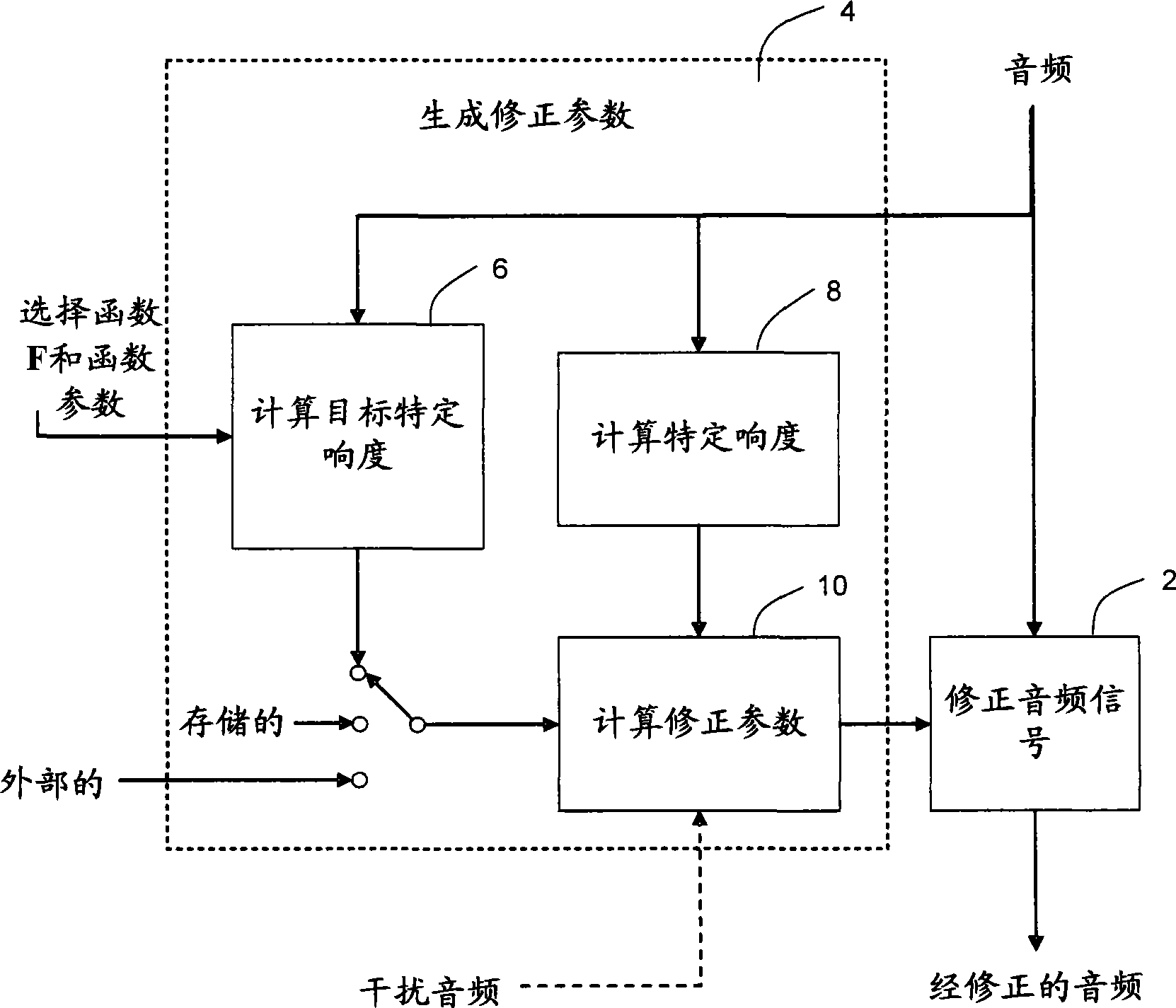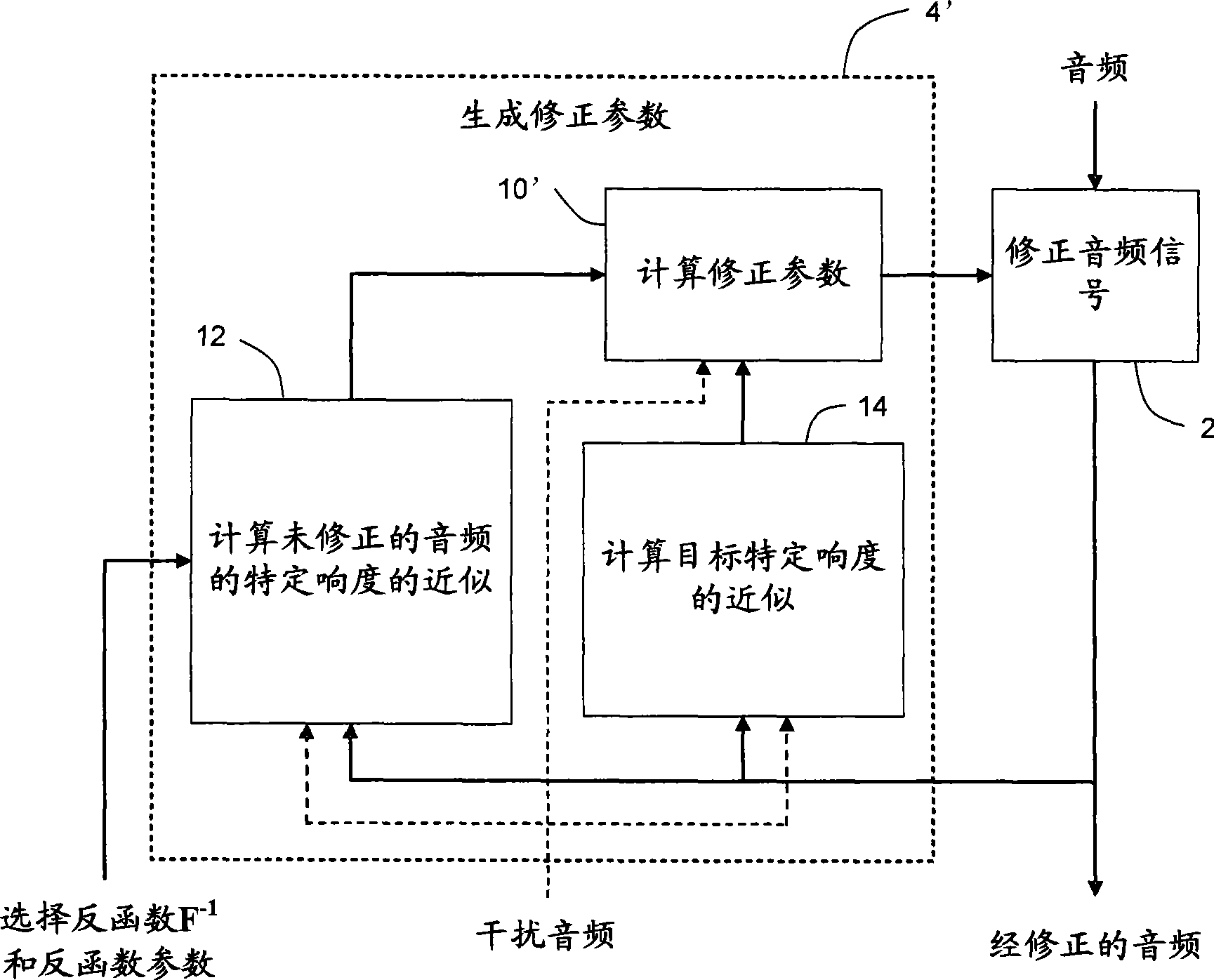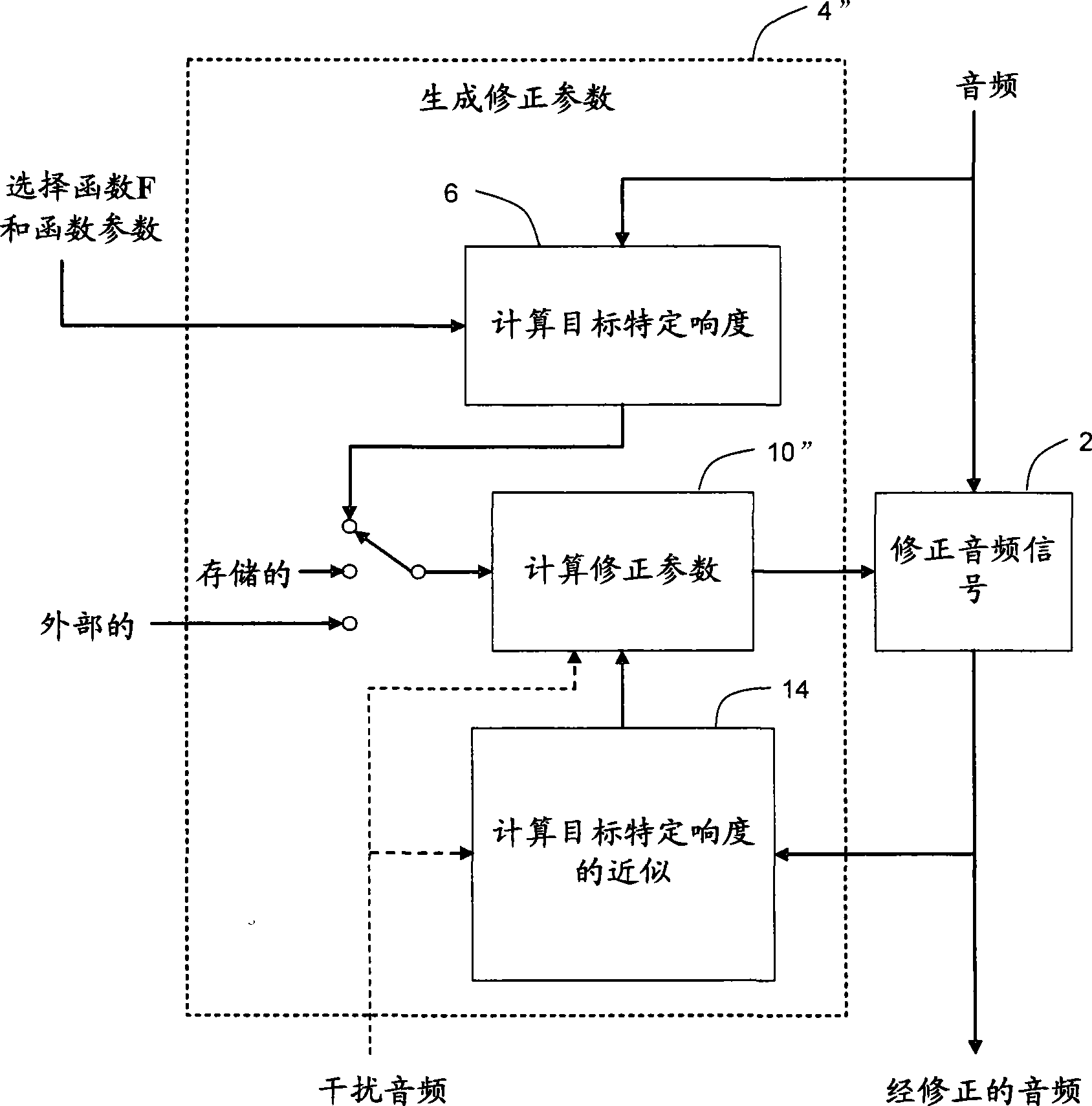Calculating and adjusting the perceived loudness and/or the perceived spectral balance of an audio signal
A technology of audio signal and audio spectrum, used in pitch control, digital/coded signal combination control, speech analysis, etc.
- Summary
- Abstract
- Description
- Claims
- Application Information
AI Technical Summary
Problems solved by technology
Method used
Image
Examples
Embodiment Construction
[0082] Figures 1 to 4 is a functional block diagram illustrating examples of possible feedforward, feedback, and hybrid feedforward / feedback implementations of both versions in accordance with aspects of the invention.
[0083] refer to figure 1 In the example of a feed-forward topology, the audio signal is applied to two paths: (1) the signal path with a process or device 2 (“modified audio signal”) capable of modifying the audio signal in response to a modification parameter, and (2) the signal path with Control path of a process or device 4 capable of generating correction parameters ("generating correction parameters"). figure 1 The sum in the feed-forward topology example Figure 2-4 The modified audio signal 2 in each of the examples may be a device or process that generates a modified parameter 4 according to (or respectively from Figure 2-4 The modification parameter M received by the corresponding process or device 4', 4" and 4"') in each of the examples modifi...
PUM
 Login to View More
Login to View More Abstract
Description
Claims
Application Information
 Login to View More
Login to View More - R&D
- Intellectual Property
- Life Sciences
- Materials
- Tech Scout
- Unparalleled Data Quality
- Higher Quality Content
- 60% Fewer Hallucinations
Browse by: Latest US Patents, China's latest patents, Technical Efficacy Thesaurus, Application Domain, Technology Topic, Popular Technical Reports.
© 2025 PatSnap. All rights reserved.Legal|Privacy policy|Modern Slavery Act Transparency Statement|Sitemap|About US| Contact US: help@patsnap.com



